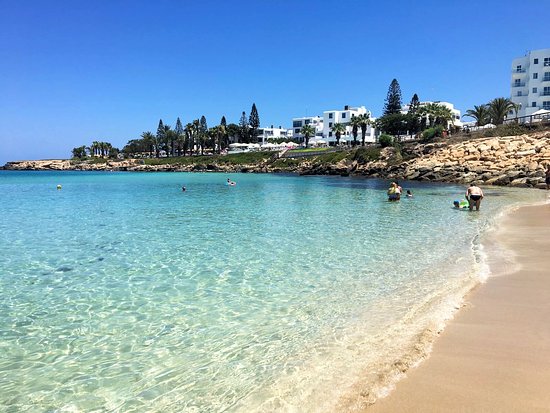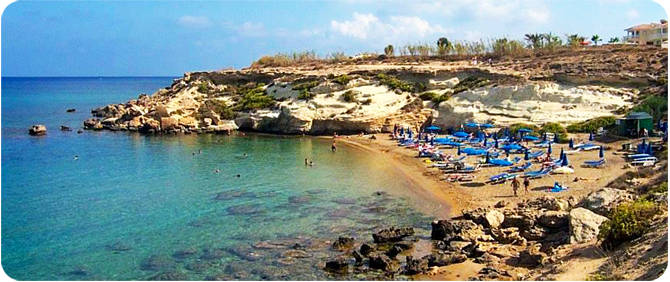Areas

|
Ayia NapaAyia Napa has a long but until recently, fairly quiet history. In fact before 1800 the only building was the Venetian monastery which still stands in the central square. From 1800 until 1974 the small village was home to few people, mostly fishermen and farmers. Ayia Napa cemented its reputation for the stunning unspoilt beaches. Today Ayia Napa has mellowed a little and whilst still very popular with urban music lovers, especially during July and August. Families are also catered for with numerous bars offering child friendly entertainment. Whilst the loud themed bars around the central square are still present and busy as ever. Luckily Ayia Napa has retained its village feel and whilst being thronged with thousands of holidaymakers in the summer it remains one of the safest places to holiday in the World. With a very low crime rate, especially against tourists and very friendly local people many visitors from around the world have fallen in love with Ayia Napa and return year after year, some even settling here permanen ly. |
Ayia TheklaAyia Thekla is a newly developed area
on the western edge of Ayia Napa. Building here began in the late 1990's and
today it is a modern collection of villa estates strung along the coast for
several miles. Just east of the beach is Ayia Thekla church and a
collection of ancient tombs in the rocks. Kite surfers and paragliders also use Ayia Thekla beach for practice and it is a popular spot for jogging and walking along the coastal pathway. In Spring the area is a riot of wildflowers and the sea shore is very pretty. |
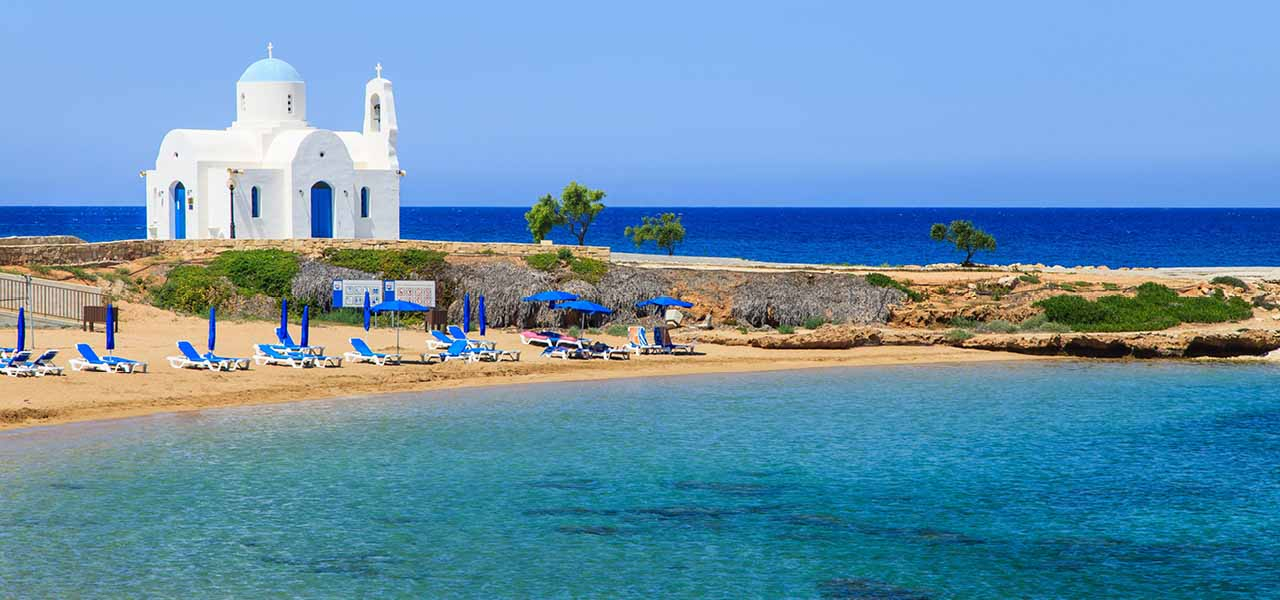
|
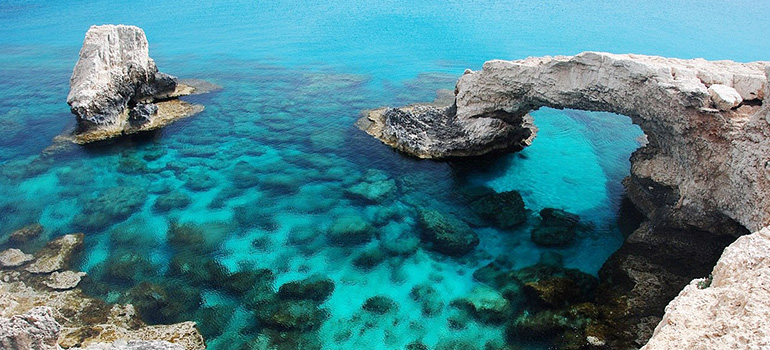
|
Cape GrekoExplore the multitude of intriguing nature trails lined with pine trees and a diverse botanical splendour whilst pausing to take in the spectacular views from the sea cliffs looking down to the beautiful Mediterranean Sea. Many benches are spread out along these trails to take a break from the walk and admire the surroundings in stillness. One of these nature trails forms part of the European Long Distance Trail E4, running from Cyprus to Gibraltar. Then there’s the Aphrodite nature trail which stretches 2 km along the North-East coast of Cape Greco which doubles up as a Cultural Route due to the mythical birth place of Aphrodite. A lovely monument to visit is the tiny white washed church of Ayioi Anargyroi with steps that lead down to the sea whre there is a place where Holy water runs. Another trail leads to the ‘Cyclops’ cave where there is a picnic site close by. Specially made cycling paths are strewn throughout. Cyprus has the ideal climate for cycling all year round with low annual rainfall and light winds. Thirty foot high limestone cliffs have caves which have been hewn by Mother Nature. Taking a boat trip along the coast you will see that they are really striking, which is why they have been aptly named the ‘Palaces’. Cape Greco has warm sea temperatures ranging from 16oC to 28oC and visibility reaching up to 40 metres. For this reason, and not to mention the wonderful scenery and the marine life, this area is very popular with divers |
ProtarasProtaras is a predominantly tourist resort which comes under the administrative jurisdiction of Paralimni Municipality in Cyprus. In ancienimes, where Protaras is now located, stood the old city-state of Leukolla. The city possessed a small safe harbour where the Athenian Demetrius Poliorketes sought refuge in the year 306 BC, lying in wait for Ptolemeos, one of the successors of Alexander the Great. In the ensuing battle, Ptolemeos was defeated and fled to Egypt, leaving Cyprus in the hands of Demetrius for a short time. Protaras is also referred to as "the land of windmills", maintaining the nostalgic quality of the past. |
|
|
KapparisIt's also an area of Paralimni in the Famagusta (Ammochostos) district of south-east Cyprus Kapparis is an up-and-coming, peaceful and picturesque locality with easy access to the towns of Paralimni and Dherynia, and the resorts of Protaras, Pernera and Ayia Napa. Although Kapparis has supermarkets, restaurants and bars, a car is really essential for maximum pleasure. |
ParalimniParalimni is the largest community of the rich valley in the Ammochostos district and is located in the southeast part of Cyprus, a point which someone can enjoy the first sunrise in all of Europe. The roots of the village are from very far away. From the Hellenistic period it was built in the ancient town of Lefkolla. Today there is nothing left from this town. During the Byzantine years Paralimni was the smallest community, or actually it was made up from many smaller agriculture communities. The largest of them must have been built between the old village and the area where the Lyceum is built today, near the church of Agios Dimitrios. This is obvious from the remains of the community which are scattered in the field of the village in the form of many small rocks. In the area, many farmers happened to find various items which witness the existence of the community. The most important findings are the byzantine coins. |
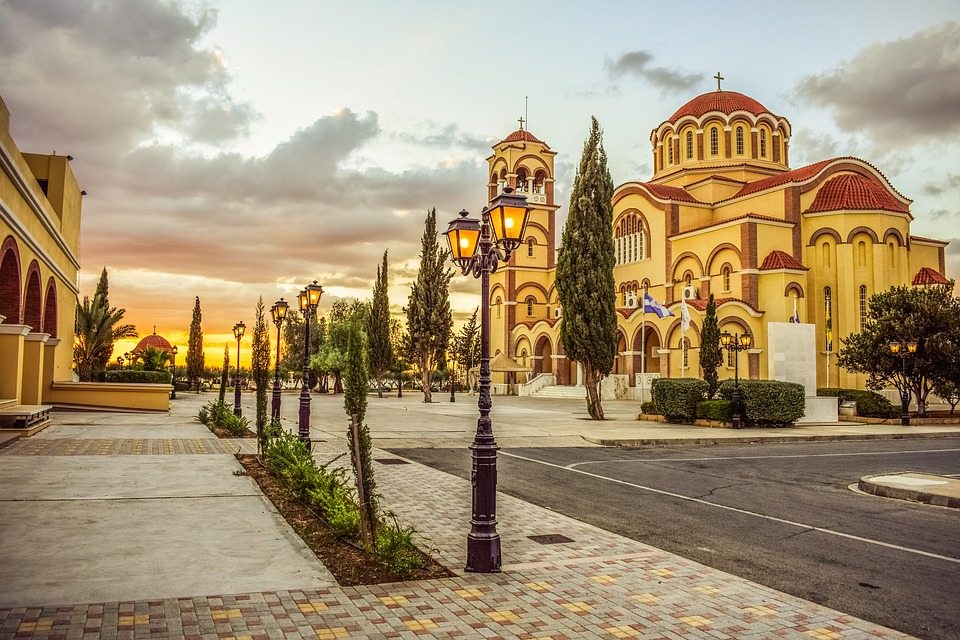
|
